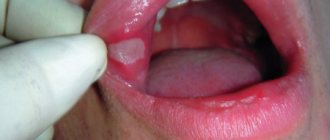Diabetic polyneuropathy – a complex of diseases of the nervous system that occur slowly and arise as a result of excess sugar in the body. In order to understand what diabetic polyneuropathy is, you need to remember that diabetes mellitus belongs to the category of serious metabolic disorders that negatively affect the functioning of the nervous system.
In the event that competent medical therapy has not been carried out, elevated blood sugar levels begin to inhibit the vital processes of the entire body. Not only the kidneys, liver, and blood vessels suffer, but also the peripheral nerves, which is manifested by a variety of symptoms of damage to the nervous system. Due to fluctuations in blood glucose levels, the functioning of the autonomic and autonomic nervous system is disrupted, which is manifested by difficulty breathing, heart rhythm disturbances, and dizziness.
Diabetic polyneuropathy occurs in almost all patients with diabetes; it is diagnosed in 70% of cases. Most often, it is detected in the later stages, but with regular preventive examinations and careful attention to the condition of the body, it can be diagnosed in the early stages. This makes it possible to stop the development of the disease and avoid complications. Most often, diabetic polyneuropathy of the lower extremities is manifested by impaired skin sensitivity and pain, often occurring at night.
Diabetic neuropathy: symptoms
Diabetic neuropathy can affect the nerves that control various muscles and internal organs.
Therefore, its symptoms are very varied. In the most general case, they are divided into “positive” and “negative”. Neuropathic symptoms
| “Active” (positive) symptoms | “Passive” (negative) symptoms |
|
|
Many patients have both
List of symptoms that diabetic neuropathy can cause:
- numbness and tingling in the limbs;
- diarrhea (diarrhea);
- erectile dysfunction in men (read more in “Impotence in diabetes - effective treatment“);
- loss of bladder control—urinary incontinence or incomplete emptying;
- sagging, sagging muscles of the face, mouth or eyelids;
- vision problems due to impaired mobility of the eyeball;
- dizziness;
- muscle weakness;
- difficulty swallowing;
- impaired speech;
- muscle cramps;
- anorgasmia in women;
- burning muscle pain or “electric shocks.”
Now we will describe in detail the symptoms of 2 types of diabetic neuropathy, which are important for patients to know about, because they are especially common.
Alpha lipoic acid for the treatment of diabetic neuropathy - read more here.
Possible complications and consequences
The progression of diabetic polyneuropathy can cause paresis and muscle weakness, which limits mobility. Damage to the cranial nerves leads to paralysis of the facial muscles and visual disturbances. Autonomic circulatory disorders accompanying polyneuropathy of the extremities are often complicated by trophic ulcers and gangrene, which is an indication for leg amputation.
The likelihood of developing diabetic polyneuropathy is higher in patients with diabetes mellitus, who often violate their diet and take hypoglycemic medications.
The most severe complication of diabetic polyneuropathy is neuropathic cachexia, accompanied by weight loss, sensorimotor impairment and numerous pathologies of internal organs.
Sensorimotor neuropathy
The longest nerve fibers stretch to the lower extremities, and they are the ones most vulnerable to the damaging effects of diabetes. Sensorimotor neuropathy is manifested by the fact that the patient gradually ceases to feel signals from his legs. The list of these signals includes pain, temperature, pressure, vibration, and position in space.
A diabetic who has developed sensorimotor neuropathy may, for example, step on a nail, get hurt, but not feel it and calmly move on. He will also not feel if his foot is injured by too tight or uncomfortable shoes, or if the temperature in the bathroom is too high.
In such a situation, wounds and ulcers usually occur on the leg, and bone dislocation or fracture may occur. This is called diabetic foot syndrome. Sensorimotor neuropathy may include not only loss of sensation, but also burning or stabbing pain in the legs, especially at night.
Review of a type 2 diabetic patient whose leg problems disappeared after his blood sugar levels improved...
Published by Sergey Kushchenko on December 9, 2019
Diabetic polyneuropathy: what is it?
This disease affects various parts of the human nervous system. This is mainly expressed in the loss of sensitivity of tissues and organs and in the disruption of the limbs. Individual nerves can also be affected - sciatic, femoral, oculomotor and others, which also leads to acute pain, organ dysfunction, paresis (local paralysis) and other unpleasant and dangerous consequences.
Diabetic polyneuropathy may be the first sign of incipient diabetes mellitus, or may occur when the disease reaches its peak. This disease manifests itself in a significant number of patients with diabetes – about half. There are two types of diabetes, and this complication can develop with any of them.
The consequences of diabetic polyneuropathy can be strabismus, impaired pupillary reflexes, neurogenic bladder syndrome, impotence, dysfunction of internal organs and other diseases. The disease is especially terrible because of its slowness and inevitability, as well as the fact that it gradually “takes over” the entire body of the patient, often leading to death.
The main cause of diabetic polyneuropathy is, of course, diabetes mellitus. This serious disease is endocrine in nature and is a consequence of a lack of the hormone insulin, as well as a disruption in the process of glucose absorption. Actually, insulin is a substance that allows tissues and organs to process glucose and obtain energy from it. To ensure this process, most organs and tissues require insulin, with the exception of only a few, primarily the brain. Therefore, diabetes mellitus usually does not affect the mental and mental side of the body, but pathologically affects many other systems.
Diabetic autonomic neuropathy
The autonomic nervous system consists of nerves that control the heart, lungs, blood vessels, bone and fat tissue, the digestive system, the genitourinary system, and the sweat glands. Any of these nerves can be affected by diabetic autonomic neuropathy.
Most often it causes dizziness or fainting when standing up suddenly. The risk of sudden death due to cardiac arrhythmias increases approximately 4 times. The slow movement of food from the stomach to the intestines is called gastroparesis. This complication causes blood glucose levels to fluctuate widely, making it very difficult to maintain normal blood sugar levels consistently.
Autonomic neuropathy can cause urinary incontinence or incomplete emptying of the bladder. In the latter case, an infection may develop in the bladder, which over time rises and harms the kidneys. If the nerves that control the filling of blood in the penis are affected, men experience erectile dysfunction.
Classification
Depending on the location of the affected nerves and symptoms, there are several classifications of diabetic polyneuropathy. The classical classification is based on which part of the nervous system is most affected by metabolic disorders.
The following types of disease are distinguished:
- Damage to the central parts of the nervous system, leading to the development of encephalopathy and myelopathy.
- Damage to the peripheral nervous system, leading to the development of pathologies such as: - diabetic motor polyneuropathy; — diabetic sensory polyneuropathy; — diabetic polyneuropathy of sensorimotor mixed form.
- Damage to the nerve pathways leading to the development of diabetic mononeuropathy.
- Diabetic polyneuropathy, which occurs when the autonomic nervous system is damaged: - urogenital form; - asymptomatic glycemia; - cardiovascular form; - gastrointestinal form.
Diabetic alcoholic polyneuropathy, which develops against the background of regular alcohol consumption, is also distinguished. It also causes burning and tingling sensations, pain, muscle weakness and complete numbness of the upper and lower extremities. Gradually, the disease progresses and deprives a person of the ability to move freely.
The modern classification of diabetic polyneuropathy includes the following forms:
- Generalized symmetrical polyneuropathies.
- Hyperglycemic neuropathy.
- Multifocal and focal neuropathies.
- Thoracolumbar radiculoneuropathy.
- Diabetic polyneuropathy: acute sensory form.
- Diabetic polyneuropathy: chronic sensorimotor form.
- Autonomic neuropathy.
- Cranial neuropathy.
- Tunnel focal neuropathies.
- Amyotrophy.
- Inflammatory demyelinating neuropathy, occurring in a chronic form.
Causes of Diabetic Neuropathy
The main cause of all forms of diabetic neuropathy is chronically elevated blood sugar levels in the patient, if they remain consistently high for several years. There are several mechanisms for the development of this complication of diabetes. We will look at two main ones.
Elevated blood glucose levels damage the small blood vessels (capillaries) that supply nerves. The permeability of capillaries for blood flow decreases. As a result, the nerves begin to “suffocate” due to lack of oxygen, and the conductivity of nerve impulses decreases or disappears completely.
Glycation is the combination of glucose with proteins. The higher the concentration of glucose in the blood, the more proteins undergo this reaction. Unfortunately, glycation of many proteins leads to disruption of their functioning. This also applies to proteins that form the nervous system. Many of the advanced glycation end products are poisons for the human body.
The mechanism of development of metabolic disorders in diabetes mellitus
- Due to excess sugar in the blood, oxidative stress increases, which leads to the appearance of a large number of free radicals. They have a toxic effect on cells, disrupting their normal functioning.
- An excess of glucose activates autoimmune processes that inhibit the growth of cells that form conductive nerve fibers and have a destructive effect on nerve tissue.
- Impaired fructose metabolism leads to excess production of glucose, which accumulates in large volumes and disrupts the osmolarity of the intracellular space. This, in turn, provokes swelling of the nervous tissue and disruption of conduction between neurons.
- A reduced content of myoinositol in the cell inhibits the production of phosphoinositol, which is the most important component of the nerve cell. As a result, the activity of energy metabolism decreases and the process of impulse conduction is completely disrupted.
How does a doctor make a diagnosis?
To diagnose diabetic neuropathy, the doctor checks whether the patient feels touch, pressure, pain, cold and heat. Sensitivity to vibration is checked using a tuning fork. Pressure sensitivity - using a device called a monofilament. The doctor will also find out whether the patient still has a knee reflex.
Obviously, a diabetic can easily test himself for neuropathy. For independent testing of sensitivity to touch, for example, cotton swabs are suitable. To test whether your feet feel the temperature, any warm or cool objects will do.
The doctor can use sophisticated medical equipment to make a more accurate diagnosis. It will determine the type of diabetic neuropathy and the stage of its development, i.e. how severely the nerves are affected. But the treatment will be approximately the same in any case. We will discuss it later in this article.
How to recognize pathology: symptoms and signs
Diabetes mellitus is a serious endocrine disease (more precisely, a family of such diseases) that causes many “daughter” diseases, syndromes and disorders. Polyneuropathy is one of these diseases, which, in turn, also manifests itself in many forms and variants. By affecting the peripheral nervous system, it can lead to disruption and cessation of the functioning of a wide variety of organs, tissues and systems.
If the pathological process affects the small fibers of the nervous system, then the patient develops a tingling feeling in the limbs, they go numb, the skin becomes insensitive to temperature, the hands and feet freeze, and the skin on the feet turns red; swelling, peeling of the skin, calluses and cracks may appear; At night you may experience severe pain in your legs. This is how diabetic polyneuropathy of the lower extremities manifests itself.
If the disease affects large nerve fibers, then the symptoms will be somewhat different. This can be pain in the joints, an unsteady gait, the skin on the lower extremities becomes even more sensitive, to the point that pain appears even from light touches; with all this, insensitivity to finger movements appears.
Thus, diabetic polyneuropathy is a disease that quite often affects the lower extremities; although the matter, of course, does not end there. Some types of disorders are considered nonspecific: dizziness, muscle weakness, speech impairment, blurred vision and bowel function.
When the autonomic nervous system is affected, the patient may experience digestive disorders. If he gets up, he may feel dizzy, have blurred vision, and may even faint. The risk of catching a genitourinary infection increases. The functioning of the heart muscle is impaired, which can even lead to sudden death. Diabetic polyneuropathy of the lower extremities is classified as a separate group because the upper extremities are affected quite rarely.
The disease has three stages of development:
- At the earliest, subclinical stage
, the disease may practically not make itself known; or there may be some decrease in the sensitivity of the extremities to high and low temperatures and pain. - At the clinical
stage, acute pain is observed in different parts of the body, a serious decrease in the sensitivity of the limbs and other organs, movement disorders, numbness, and muscle weakness; There is a form for which acute pain is not characteristic. - The disease in the complication
manifests itself in the form of ulcers on the legs, which often hurt; in severely advanced cases, gangrene develops, which can lead to amputation of the limb.
Painful symptoms most often appear at night. They may be accompanied by tingling, a sensation of “pins and needles”, and numbness of the limbs.
Experts often distinguish between positive and negative symptoms
.
- The first include acute pain in the right hypochondrium, in the abdomen or pharynx, painful sensations when touched, hypersensitivity during pain, lumbago (they resemble electric shocks).
- Negative ones are numbness of the limbs, tingling, pain with any movements of the arms and legs.
Unsteady gait in diabetic polyneuropathy of the lower extremities is explained by disruption of the vestibular apparatus.
The division into positive and negative symptoms has its own meaning. When negative results appear, it can be stated that the disease has reached its advanced stage and has become irreversible. Consequently, with positive manifestations, the patient still has hope for improvement in well-being.
Treatment of diabetic neuropathy
The main way to treat diabetic neuropathy is to lower your blood sugar and learn to maintain stable levels, like healthy people without diabetes. All other therapeutic measures do not have even a fraction of the effect of controlling blood glucose. This applies not only to neuropathy, but also to all other complications of diabetes. We recommend for your attention the following articles:
- Insulin and Carbs: The Truth You Should Know;
- The best way to lower blood sugar and keep it normal.
If diabetic neuropathy causes severe pain, your doctor may prescribe medications to relieve the pain.
Drugs that are used for the symptomatic treatment of pain in diabetic polyneuropathy
| Drug class | Name | Daily dose, mg | Severity of side effects |
| Tricyclic antidepressants | Amitriptyline | 25-150 | + + + + |
| Imipramine | 25-150 | + + + + | |
| Serotonin/norepinephrine reuptake inhibitors | Duloxetine | 30-60 | + + |
| Paroxetine | 40 | + + + | |
| Citalopram | 40 | + + + | |
| Anticonvulsants | Gabapentin | 900-1800 | + + |
| Lamotrigine | 200-400 | + + | |
| Carbamazepine | up to 800 | + + + | |
| Pregabalin | 300-600 | ||
| Antiarrhythmics | Mexiletine | up to 450 | + + + |
| Opioids | Tramadol | 50-400 | + + + |
Attention! All of these medications have significant side effects. They can only be used as prescribed by a doctor if the pain becomes completely unbearable. Many patients find that enduring the side effects of these drugs is worse than enduring pain due to nerve damage. These medications may also increase your blood sugar levels.
Antioxidants and B vitamins, especially B12 in the form of methylcobolamine, are used to treat diabetic neuropathy. Data on the effectiveness of this is conflicting. In any case, we recommend that you try alpha lipoic acid and B complex vitamins.
Treatment
The main principle of treatment of diabetic polyneuropathy is to reduce the negative impact of hyperglycemia on the peripheral nervous system. This is achieved by properly selected diet and hypoglycemic therapy, the rules of which the patient must strictly follow. When nerve damage develops, pathological changes are usually irreversible, so it is important to prevent the condition from progressing.
The most severe complication of diabetic polyneuropathy is neuropathic cachexia, accompanied by weight loss, sensorimotor impairment and numerous pathologies of internal organs.
In addition to treating the underlying disease, drugs are prescribed that improve trophism and metabolism in nerve tissues and enhance microcirculation. For local effects (for example, to improve the trophism of foot tissue), massages, electrophoresis and other physiotherapeutic procedures can be used.
In the treatment of diabetic polyneuropathy, symptomatic measures are also used - for example, for pain and inflammation of the nerves, analgesics from the NSAID group are prescribed. When trophic ulcers develop, they require careful treatment to prevent infection. In severe cases (extensive ulcers or gangrene), surgical treatment up to amputation is necessary.
Diabetic neuropathy is completely curable!
We've saved some good news for you until the end. Neuropathy is one of the reversible complications of diabetes. This means that if you can lower your blood sugar and keep it consistently normal, you can expect your nerve symptoms to go away completely.
It may take several months to several years for the nerves to begin to recover, but it does happen. In particular, sensation in the legs is restored and the threat of “diabetic foot” disappears. This should be an incentive for you to make every effort to intensively control your blood sugar.
Erectile dysfunction in men can be caused by damage to the nerves that control the penis or blockage of the vessels that supply blood to the corpus cavernosum. In the first case, potency is completely restored along with the disappearance of other symptoms of diabetic neuropathy. But if diabetes has managed to cause problems with blood vessels, then the prognosis is worse.
We hope our article today was useful to patients. Remember that today there are no medications that are truly effective in treating diabetic neuropathy. Data on the effectiveness of alpha lipoic acid and B vitamins is conflicting. As soon as new powerful drugs become available, we will let you know. Want to know right away? Subscribe to our e-mail newsletter.
The best way to treat diabetic neuropathy is to keep your blood sugar within normal range. After reading our site, you already know what is the real way to achieve this. In addition to a low-carb diet, we recommend that you try alpha lipoic acid and high-dose B vitamins. This will definitely not cause harm to the body, and the benefits can be significant. Supplements may help speed up your recovery from symptoms of nerve conduction disorders.
Diagnostics
In the diagnosis of diabetic polyneuropathy, a number of instrumental and laboratory techniques are used, aimed at studying the functions of the peripheral nervous system, the condition of the muscles, and the skin. The choice of diagnostic technique depends on the form of the pathology and the severity of its symptoms. In addition, diagnostic measures should include methods for determining diabetes mellitus and the severity of hyperglycemia - blood and urine tests for glucose levels, glycosylated hemoglobin content and other studies. The definition of diabetic polyneuropathy itself includes:
- examination by a neurologist - study of complaints and subjective symptoms, study of the history of the underlying disease, determination of skin sensitivity, activity of tendon reflexes and other neurological functions;
- electromyography – allows you to evaluate the relationship between the nervous and muscular systems and thereby indirectly determine the degree of damage to nerve fibers;
- Nerve conduction study (NCS) – studies the speed of nerve impulses traveling through fibers to assess the extent of their damage, often performed in conjunction with electromyography.
Other medical specialists can also participate in the diagnosis of diabetic polyneuropathy - endocrinologist, ophthalmologist, urologist, gastroenterologist. This is necessary in cases where nerve damage leads to disruption of the functioning of certain organs and systems.
Complications
Diabetic neuropathy can contribute to a number of high-risk complications.
Possible complications include loss of sensation in the foot. This may result in missing cuts or sores, which can lead to infection. Untreated limb infection may lead to the need for limb amputation.
Serious bladder and kidney infections may also occur, causing health problems.
Good foot care is essential to prevent complications of diabetic peripheral neuropathy. People with this condition should examine their feet daily for injuries or sores.
Smoking also increases the risk of foot problems in people with certain types of diabetic neuropathy. A podiatrist can help with foot care, and a doctor can give advice on quitting smoking.
Treatment methods
Since DN occurs due to diabetes, it must be eliminated with the help of complex therapy that helps reduce glucose concentrations and treat neuropathy.
For diabetes mellitus and DN, the following drugs are prescribed:
- antioxidants. Their main task is to restore NV and slow down their damage by free radicals and oxidation products;
- medications with an analgesic effect;
- antibiotics that promote healing of ulcers and prevent gangrene;
- "Actovegin", which improves blood circulation in the NV;
- medications with magnesium that relieve convulsive lesions of the NK;
- antidepressants that relieve neurosis, vegetative disorder and depression (prescribed if necessary);
- muscle relaxants that relieve spasms;
- vitamins E and B, fighting neurological manifestations, improving NV conductivity and metabolic processes;
- "Nevibol" or "Metoprolol" to eliminate tachycardia.
"Actovegin"
To eliminate skin irritability, the patient is prescribed ointments and gels. In addition to drug therapy, they resort to:
- relaxing massage;
- magnetic therapy;
- electrical stimulation;
- physical therapy;
- acupuncture;
- hyperbaric oxygenation.
Treatment with traditional methods
The use of alternative medicine will help improve the therapeutic effect of the drugs, reduce the fighting sensations in the NK and the limitation of its movements.
Recipe 1
Steam whole colored clove buds (10-15 grams) with 550 ml of boiling water and leave for 2.5 hours. The infusion should be taken daily, 60 ml three times for 15 days. Then take a break for 10 days. You need to follow this method for 6 months.
Recipe 2
Steam a tablespoon of crushed dandelion with 350 milliliters of boiling water, add 10 grams of plant roots. Boil for 15 minutes over low heat, then leave for an hour. Drink 35 milliliters three times daily for three months.
Recipe 3
Steam calendula flowers (25 grams), pour 0.4 liters of boiling water, leave to steep for 2.5 hours. Take 120 milliliters daily. The duration of the course of treatment is determined by the doctor.
Recipe 4
The patient needs to prepare:
- mint;
- birch;
- chamomile;
- immortelle;
- blueberries;
- St. John's wort;
- knotweed
After mixing 5 grams of each ingredient, they need to be steamed with a liter of boiling water and allowed to brew for 10 hours. Take the prepared healing drink throughout the day. The course of treatment is a month.
Before using the above recipes at home, the patient should consult a doctor. Despite the positive qualities of the plants used, they can be very harmful to some people.
Traditional methods
In the process of therapy aimed at eliminating various forms of neuropathy, physiotherapy procedures should be combined with the use of traditional methods of treatment. Such an integrated approach will help achieve a positive result much faster.
Herbal treatment
In the treatment of neuropathy, doctors recommend using the most common herbs.
This is a long-term and at the same time quite effective therapy that gives a quick positive result. Experts advise using the following herbs to prepare medicinal infusions:
- Burdock root.
- Hazel.
- Dill.
The preparation of infusions is carried out according to the instructions indicated on the packaging, so there will be no problems with obtaining medicinal mixtures.
The raw materials themselves can be purchased at regular pharmacies. The only thing you need to pay attention to is to discuss the dosage with your doctor.
The course of herbal treatment should last at least two weeks. After a week's break, herbal therapy courses are usually repeated.
Treatment with dates
The product helps cope well with the signs of neuropathy.
You need to take several ripe fruits of the product, peel them from the seeds and grind them in a meat grinder.
Every day, three times you need to take the mixture, 2-3 spoons after meals. If desired, dates can be diluted in milk.
The course of treatment is a month. This is an ideal nutrition for neuropathy of the lower extremities.
Application of turpentine
You need to take two tablespoons of turpentine and mix thoroughly with three tablespoons of water. Pour this mixture over a small piece of bread and apply it to the affected area for 7 minutes.
After the procedure, you should go to bed, carefully wrap your feet and sleep warm all night. The event is repeated every two days until complete recovery; this is an ideal warming remedy.
Goat milk
Compresses based on goat's milk help quickly get rid of neuropathy. To prepare everything, simply take a small piece of gauze and moisten it in slightly heated milk.
The compress is applied for about two minutes. To obtain a positive result, this manipulation should be performed several times a day.
Shilajit treatment
In the process of treating the disease, a couple of times a day you need to drink mumiyo dissolved in a glass of milk on an empty stomach.
Its amount should be 0.2 grams. To improve the taste, add a little honey to the prepared composition.
The course of such treatment lasts three weeks or a little more.
If the disease has been advanced, the course should be taken again after a 10-day break.
Powerful mixture
This unique recipe for making a compress is very popular. You need to take an ordinary 3-liter glass jar and pour the following components into it:
- ammonia 120 grams;
- medical alcohol 300 grams;
- sea salt 200 grams;
- camphor 30 grams;
- clean settled water - liter.
The container must be tightly closed and then shaken before each use. In the finished composition, you need to moisten the bandage and then apply it to the sore legs. This needs to be done 2-3 times a day.
Other folk remedies
Here are a few more fairly effective and easy-to-prepare remedies that are most suitable when deciding how to treat neuropathy.
These are certain compositions that can be used as a compress:
- Garlic. You need to take 4 cloves, grind them with a rolling pin, add water and bring to a boil.
- Bay leaf. You need to take about 6 leaves of raw material, pour a glass of regular boiling water over them and cook over low heat for 10 minutes.
- Apple vinegar. Everything is simple here, you need to wrap the sore spots with gauze, previously soaked in a vinegar solution.
- Lemon. You can tie the peel of a fresh peeled lemon to your feet. To prevent skin irritation, you can drip a little olive oil onto it.
- Regular salt. This is the perfect neuropathy remedy to always have on hand. Heat about 500 grams of salt in a dry frying pan, pour it into a fabric bag or sock and apply it to the sore spot. After a month's course, you can notice significant improvements in your health.
You can not only make compresses, but also take certain foods, the beneficial substances of which can help the body cope with the disease much faster.
Jerusalem artichoke helps very well with neuropathy.
It effectively lowers blood sugar levels, which is useful for diabetics, and also improves metabolism, the condition of the liver and other organs of the digestive system. Simultaneously with all the above methods of treating neuropathy, you can relax your body or legs from time to time in a bath with dill added to it.
Clay compresses help very well. Before going to bed, you should rub your feet and legs with medicinal camphor oil or turpentine.
None of the listed methods will be effective without complex treatment. In therapy aimed at eliminating neuropathy, everything is important - medications and folk remedies, as well as physical activity; there are no longer any alternatives.
What to do if you have diabetes?!
We recommend reading an exclusive article on how to forget about diabetes forever... Read more >> |
ul
What can you do to relieve pain?
It has been established that in diabetic neuropathy it is necessary to influence the central and peripheral mechanisms of pain. However, nonsteroidal anti-inflammatory drugs are not effective for relieving neuropathic pain. Therefore, the following groups of drugs are used:
- tricyclic antidepressants - have analgesic effects due to the accumulation of serotonin in the brain. Clofranil and Amitriptyline are most often recommended;
- anticonvulsants – Finlepsin, its use is limited in patients with high physical activity. Gabalept reduces sensitivity to pain at the level of the spinal cord. Lyrica has fewer side effects, but is also less effective;
- local, based on capsicum pepper - capsicum . It stimulates the release of pain conductors and depletes its reserves. it is rarely prescribed, since the use is accompanied by irritation of the skin and severe burning; it is contraindicated for varicose veins;
- central painkillers - Tramadol . It is recommended if there is no effect from other medications; the result appears only when using high doses, which increases the likelihood of complications of therapy.
The success of pain reduction depends on the degree of compensation of hyperglycemia. Recent studies have proven that it is also important to normalize blood pressure and its lipid spectrum. The choice of drug is often done by trial and error, as patients respond differently to therapy. It is also important to take into account that a period of time passes from the moment you start taking it to the first results, the duration of which also varies from person to person.
Causes of pathology
There can be many reasons for the development of pathology. On their basis, the distribution and classification of pathology by type is carried out.
Among the most common pathologies are:
- injuries in which nerves were affected or serious tissue damage was noted;
- hypothermia;
- severe intoxication with salts, drugs, and mercury;
- chronic alcoholism;
- diabetes;
- different types of infections;
- HIV infection;
- developing multiple sclerosis.
The development of the disease can be caused by a lack of vitamins, which are necessary for the natural metabolism of microelements beneficial to the body.
ul
Consequences of the disease
Polyneuropathy in diabetes mellitus can itself cause complications. When sensation in the feet is lost, a person does not feel burns, cuts, calluses, or inflammation. It ends with amputation. When thin sensory fibers are damaged, there is constant pain: shooting, tingling, tugging, sharp or dull. Legs hurt at night, when at rest. When sugar levels are normalized, the discomfort goes away, but all other symptoms remain.
The condition is much worse in terms of danger when sugar is high but there is no pain.
There is constant chilliness and numbness. The above described change in the foot is called diabetic foot syndrome. This collective concept includes, in addition to the described symptoms, the presence of ulcers, purulent-necrotic processes, and osteoarticular lesions. This complication of DP occurs more often in type 2 diabetes—almost 10 times. With diabetic foot, minor foot problems appear:
- ingrown toenail, darkening of the nail due to subungual hemorrhage from tight shoes;
- nail fungus (onychomycosis) and foot skin;
- calluses and corns;
- cracks and dry skin of the heels - hyperkeratosis.
The appearance of the foot changes: it flattens due to flat feet, swells, the big toe bone enlarges, the toes become hammer-shaped, curled, and bend at the first joint.
Preventive measures
To prevent the development of DN, diabetics need to build their lives according to certain guidelines. It consists of:
- maintaining acceptable glucose concentrations. To do this, you need to follow a special diet, engage in adequate physical activity, take insulin and sugar-lowering tablets;
- daily inspection of the NK’s feet for the presence of wounds and cracks;
- protecting feet from damage;
- complete cessation of nicotine and alcohol products;
- systematic use of natural cosmetics to soften the skin;
- regular examination by a specialist;
- body weight control.
Alcohol and smoking are prohibited
Important! Diabetics should not walk barefoot or wear uncomfortable shoes.
Representatives of diabetology believe that one of the significant causes of DN is a deficiency of essential substances in the daily diet of a diabetic. This condition negatively affects internal organs and reduces the activity of drugs that are required to regulate sugar. To prevent this from happening, the patient needs to eat permitted fruits and vegetables in acceptable quantities every day.
Why does the disease occur?
Experts say that DN develops due to:
- persistently high sugar levels;
High sugar levels
- long-term diabetes;
- old age;
- bad habits (abuse of nicotine and alcoholic beverages).
Alcohol and cigarettes provoke metabolic disruptions, which several times increase the risk of damage to the nervous system.
Why do your feet get cold when warm and what to do?
Legs are a very important part of the body. And it’s not just that we need them to move. There are many nerve endings concentrated in a person’s feet. There are many small vessels and capillaries in them.
On the other hand, it is worth keeping in mind that the lower part of the legs - feet and toes - is at a disadvantage compared to the rest of the body. After all, the distance from the heart to the legs is much greater than the distance from the heart to other parts of the body. Therefore, blood circulation in the lower legs is not as intense as in the upper torso. Therefore, it is not at all surprising that the legs most often receive less blood, and therefore heat, than the rest of the body. It should also be remembered that the legs have relatively little fatty tissue to retain heat.
However, the feeling of cold feet in a warm room should not be experienced by a person whose health does not have weak points. Therefore, feet freezing in the warmth can serve as a kind of diagnostic sign, indicating that not everything is in order in the body.
So, what reasons can cause cold feet? This:
- vegetative-vascular dystonia;
- osteochondrosis;
- high or low blood pressure;
- diabetes;
- anemia;
- heart failure;
- dehydration;
- vitamin deficiencies;
- previously suffered frostbite of the legs;
- immunity disorders;
- endocrine disorders, in particular hypothyroidism;
- allergic reactions;
- smoking;
- vein diseases - phlebitis and thrombophlebitis;
- Raynaud's syndrome;
- atopic dermatitis;
- underweight;
- chronic stress;
- cerebrovascular accidents;
- elderly age.
High sensitivity of the feet to cold can also be caused by such circumstances as improper sitting at the table (in which the legs always become numb), sitting on a chair in a position where one leg is crossed over the other, constantly wearing uncomfortable shoes or synthetic socks or tights in which feet are constantly cold or sweaty.
ul
Diagnosis of the disease
Diagnosing the patient should identify deviations in the functioning of the NV, as well as establish clinical and subclinical symptoms.
Diagnostics involves checking:
- foot sensitivity;
- sensitivity to temperatures;
- Achilles reflex;
- muscle reactions to acupuncture.
Achilles reflex
To check the autonomic and somatic nervous system, the doctor uses special medical equipment. Today in medicine this is done using advanced computer sensory testing of the sensitive threshold and functionality of the NV.
To complete the analysis, the system takes into account the following indicators:
- body weight;
- age;
- sexual difference;
- duration of diabetes.
Stages of the flow of DN
The pathology develops gradually. How it is expressed at each stage:
- at zero (subclinical) there are no signs of pathology;
- clinically, pain and impaired sensitivity are already expressed;
- in chronic conditions, pain is more intense, especially intensified at night, some reflexes are lost;
- in amyotrophic, weakness develops in the muscles, the number of absent reflexes increases, sensitivity is lost, thermoregulation is upset, and acute night pain occurs;
- in a painless state, reflexes and sensitivity are completely lost, and the likelihood of non-traumatic amputation and neuroosteoartopathy increases.
The main condition for properly selected therapy is timely diagnosis.
Symptoms of DN
How the disease will express itself is based on its form and stage. The general picture of the disease can be passive or active.
If a patient begins to have active symptoms of DN, they will suffer from:
- tingling;
- itching;
- high sensitivity;
- acute pain;
- severe discomfort even from minimal contact.
The list of passive signs is presented:
- urinary incontinence;
- poor eyesight;
- stool disorder;
- flabby muscles and skin;
- convulsive lesions;
- problems with potency;
- anorgasmia;
- numbness or stiffness of the arms and legs;
- impaired speech and swallowing reflex;
- unsteady gait.
Spasm
Conducting a timely and correct examination will allow you to select the appropriate therapy for DN.
Risk factors
One of the main factors leading to neuropathic changes in the legs is elevated blood sugar. Usually, at least 10 years pass before the first signs develop, and after the fifth year, changes in diabetics can be detected through instrumental diagnostics. In the presence of additional aggravating conditions, the progression of the pathology may begin earlier. These include:
- patient age over 45 years;
- lack of adequate treatment for diabetes mellitus (violation of medication use, unhealthy diet);
- smoking;
- elevated cholesterol levels;
- obesity;
- alcoholism;
- concomitant vascular diseases of the lower extremities.
Conservative and surgical treatment methods
Gangrene is treated in two ways - surgical and conservative, with the first method being the most effective.
Using a conservative treatment method, doctors try to obtain the following results:
- diabetes compensation;
- reducing the load on the lower limbs and, especially, on the affected area;
- using antibiotics to reduce the area of infection and intoxication of the body;
- vitamins and a complex of microelements to increase the level of immunity and enhance the natural protective functions of the body.
- broad-spectrum antibiotics are used;
- detoxification therapy is carried out;
- blood is transfused.
The surgical method is the main one and for wet gangrene it is the only effective way to avoid death.
During surgery, doctors remove the affected tissue and clean those tissues that are located near the infected area. If the affected area is a finger, then in some cases the foot is removed; if the foot is damaged, then the leg is removed up to the knee, etc.
Along with surgical intervention, the following actions are performed:
Many patients with diabetes mellitus, against which gangrene develops, also undergo concomitant treatment:
ul
Diabetic polyneuropathy: issues of pathogenesis and treatment options
For citation.
Sadyrin A.V., Karpova M.I., Dolganov M.V. Diabetic polyneuropathy: issues of pathogenesis and treatment options // Breast Cancer. 2019. No. 1. pp. 47–50. In diabetes mellitus (DM), the eyes, kidneys, and all parts of the peripheral nervous system (PNS) are most often affected.
Diabetes is the leading cause of polyneuropathy, accounting for approximately 1/3 of all cases [3]. Diabetic polyneuropathy (DPN) is a subclinical or clinically symptomatic lesion of the PNS in patients with diabetes. Only that type of damage to the PNS can be considered diabetic in which other causes of the development of polyneuropathy are excluded, for example, toxic (alcohol) damage, other diseases of the endocrine system (hypothyroidism). DPN accounts for 30% of all polyneuropathies, significantly reduces the quality of life of patients and is one of the main risk factors for the development of foot ulcers in patients with diabetes. From 40 to 70% of all non-traumatic amputations occur in patients with diabetes [4]. According to most studies, every second patient with diabetes has symptoms of polyneuropathy [4, 7]. In turn, electroneuromyographic signs of peripheral nerve damage can be detected in 9 out of 10 patients. PNS damage in patients with diabetes has been actively studied for more than a decade. Thus, a study of almost 5000 patients with diabetes conducted by J. Pirart (1978) showed that at the time of the onset of the disease, polyneuropathy occurred in 7.5%. The criteria for peripheral nerve damage were decreased reflexes and impaired vibration sensitivity. After 25 years of observation, signs of polyneuropathy were observed in every second patient [20]. P. J. Dyck et al. (1997), using a combination of clinical symptoms, questionnaires to identify sensory disorders and a study of heart rate variability, found signs of polyneuropathy in 54% of patients with type 1 diabetes and in 45% with type 2 diabetes [13]. The duration of diabetes is the leading risk factor for the development of peripheral nerve damage; in almost 5% of patients, symptoms of polyneuropathy occur at the onset of the disease. Additional and at the same time less significant risk factors are age, smoking, triglyceride levels and the presence of arterial hypertension [12, 31]. In recent years, the presence of some genetic stigmas (activity of superoxide dismutase and aldose reductase), which contribute to the earlier development of polyneuropathy, has been noted [12, 31]. Scheme 1. Classification of diabetic neuropathy (DN) [4, 7]
I. Subclinical (asymptomatic):
– electrodiagnostic testing of the nerve;
– sensitivity testing; – vegetative tests II.
Clinical: 1. Diffuse.
2. Distal symmetrical neuropathy: – with predominant damage to sensory nerves (sensory form of DN); – with predominant damage to the motor nerves (motor form of DN); – with combined lesions (sensorimotor form of DN). 3. Autonomic: -cardiovascular system: silent myocardial infarction, orthostatic hypotension, decreased heart rate variability, resting tachycardia, cardiac arrhythmia; – gastrointestinal tract: gastric atony, diabetic enteropathy (nocturnal and postprandial diarrhea), malabsorption; –bladder: neurogenic bladder; –reproductive system: erectile dysfunction, retrograde ejaculation; – other organs and systems: impaired pupillary reflex, impaired sweating, absence of symptoms of hypoglycemia. III.
Local: – mononeuropathy (upper or lower extremities); – multiple mononeuropathies; – plexopathies; – radiculopathy; – tunnel syndromes (in the strict sense, these are not neuropathies, since clinical signs are caused by compression of a possibly intact nerve).
Pathogenesis
It is generally accepted that the development of acute and asymmetrically occurring forms of mono/polyneuropathy is based on immune factors (according to some data, antibodies to insulin cross-link nerve growth factor, which leads to atrophy of nerve fibers) and possibly ischemic damage, and the development is based on chronic, symmetric forms - metabolic disorders and microangiopathy.
According to the metabolic theory of the pathogenesis of neuropathy, the leading factor in damage to nervous tissue in diabetes is hyperglycemia, which leads to significant pathological changes in the metabolism of nerve cells. Excess glucose that cannot be metabolized by hexokinase undergoes conversion to sorbitol and then to fructose. Thus, glucose is fermented through the polyol pathway via the enzyme aldose reductase. It is with an increase in the content of sorbitol in the bodies of neurons, Schwann cells, endothelium and nerve processes that the main damaging effect of chronic hyperglycemia is associated. Sorbitol, being a hexahydric alcohol, accumulates in the cell and causes disruption of osmotic homeostasis with subsequent damage [14, 29]. In addition, intracellular hyperglycemia reduces the activity of sorbitol dehydrogenase. This theory finds clinical application in the use of aldose reductase inhibitors, which have shown to be effective in the treatment of DPN [16]. Hyperglycemia, at the same time, enhances the processes of non-enzymatic and enzymatic glycation of structural proteins of the nerve fiber (myelin and tubulin), the rate of which increases many times in the presence of fructose. As a result, end products of protein glycation are formed, which have been proven to impair neuronal metabolism, axonal transport, nerve impulse conduction, the regenerative abilities of Schwann cells and stimulate the synthesis of proinflammatory cytokines [7, 14]. Neuron metabolism under conditions of hyperglycemia is also characterized by low synthesis of polyunsaturated fatty acids, the deficiency of which adversely affects blood flow through the vasa nervorum, reduces the synthesis of prostanoids and disrupts intracellular calcium homeostasis [15]. The microangiopathic component, as a rule, joins later and has a slightly less pathological effect. Careful glycemic control at the onset of diabetes allows one to delay the clinical manifestation of polyneuropathy by almost 2 years [33]. It has also been shown that existing peripheral nerve damage can be arrested and even reversed with careful glycemic control. However, this effect is more pronounced in type 1 diabetes and in some cases may not be observed in patients with type 2 diabetes. This most likely indicates a more significant vascular damaging factor in the latter. According to the vascular theory, the cause of neuropathy in diabetes is damage to small vessels. Diabetic microangiopathy is characterized by microthrombosis and occlusion of the capillary bed, leading to ischemia and subsequent degeneration of nerve fibers. A significant factor is endothelial dysfunction, which is a consequence of several damaging influences at once. First of all, this is the aforementioned metabolic damage to the endothelium due to exposure to excess sorbitol and fructose, as well as inhibition of the antioxidant glutathione system due to a lack of nicotinamide adenine dinucleotide phosphate (NADP), which is consumed in large quantities in the polyol cycle. At the same time, end products of protein glycation induce the release of proinflammatory cytokines, which have a known damaging effect on endothelial cells [22]. Hyperglycemia, in direct and indirect ways through endothelial dysfunction, leads to shifts in coagulation homeostasis, increasing the procoagulant activity of plasma [4]. Impaired blood flow through the vasa nervorum leads to ischemia and hypoxia, under conditions of which the activity of the beta-2 subtype of protein kinase C increases, which has a toxic effect on axonal transport and the cytoskeleton, which ultimately leads to distal axonopathy [4, 7, 22, 25]. The pathological substrates of DN are thinning of myelinated fibers, diffuse or local demyelinated areas, axonal degeneration, decreased lumen of the vasa nervorum and thickening of the capillary basement membrane [23]. Treatment
For all patients, a clinically significant measure is the correction of modifiable risk factors: smoking, dyslipidemia, arterial hypertension.
1. Correction of blood glucose levels.
Chronic hyperglycemia causes a cascade of metabolic reactions that leads to damage to almost all parts of the PNS.
Therefore, glycemic control appears to be the most effective measure that slows the progression of neuropathy and delays its onset. The relationship between blood glucose levels and the degree of nerve fiber damage has been repeatedly confirmed in large multicenter studies. In patients in the early stages of diabetes, intensive glycemic control significantly slowed the progression of neuropathy [30]. Long-term glycemic control in the early stages of diabetes (so-called “metabolic memory”) also seems useful (DCCT Research Group, 1993) [12]. The United Kingdom Prospective Diabetes Study (UKPDS) showed that maintaining glycemia <6 mmol/L reduced the risk of developing polyneuropathy after 15 years by 40% compared with patients maintaining glycemia <15 mmol/L [31]. The Diabetes Control and Complications Trial (DCCT), which included patients with type 1 diabetes in a study, showed that with more intensive insulin therapy after 6 years, microangiopathic complications and polyneuropathy were 60% less common than with the traditional regimen of insulin use [12]. Reducing the level of glycemia significantly reduces the subjective symptoms of neuropathy, normalizes autonomic function and improves the neurophysiological characteristics of the affected nerves [30, 31, 36]. There is evidence that lowering blood sugar levels to values close to euglycemia reduces pain, but not all studies demonstrate this relationship [29]. The best indicator to focus on when treating diabetes is the level of glycosylated hemoglobin HbA1c, which should be <7% [3]. 2. Pathogenetic therapy
for DN includes the use of thioctic acid and B vitamins. Changes in metabolism in diabetes are characterized by an increased level of free radical formation with inhibition of natural antioxidant systems.
The only antioxidant drug with proven efficacy in several randomized controlled trials and meta-analyses (level A evidence) is alpha-lipoic (thioctic) acid [10, 15, 19]. Its mechanism of action is based on the inactivation of free radicals, which reduces oxidative stress. In addition, thioctic acid prevents inhibition of NO synthetase, thereby preventing the deterioration of blood flow through the vasa nervorum, thus preventing ischemic damage to nerve fibers. The vast majority of large studies have demonstrated the effectiveness of thioctic acid in dosages of 600–1800 mg/day when taken for 4–6 months, but a therapeutic effect was observed after 3 weeks. [4, 10]. The positive effect of the use of alpha-lipoic acid was to reduce subjective signs of neuropathy (paresthesia, pain, symptoms of autonomic dysfunction), improve vibration sensitivity and electrophysiological characteristics of nerve fibers. Thioctic acid is prescribed 600 mg/day intravenously or orally in courses of 2–3 months. with further breaks of 3 months. The following regimen also seems rational: IV infusion 600 mg/day for 1 month. with a further transition to oral administration at the same dosage for 1–2 months. Some studies have shown that almost every fifth patient with type 1 diabetes has thiamine deficiency [17]. It is worth noting that a reduced level of neurotropic vitamins (B1, B6, B12) makes nerve fibers more vulnerable to metabolic and ischemic damage [5, 6, 28]. Vitamin B1 (thiamine) improves synaptic transmission, reduces intensity and slows down the rate of degeneration of nerve fibers in lesions of various natures. A specific effect in DN has been shown, consisting in slowing down the processes of non-enzymatic glycation of proteins [6, 27, 28]. In addition, thiamine neutralizes the negative impact of advanced glycation end products on the mechanisms of axonal transport. B6 (pyridoxine) is metabolized to pyridoxal phosphate, which is a cofactor for enzymes that regulate protein and fat metabolism. Its role in the synthesis of many neurotransmitters (norepinephrine, serotonin, dopamine, GABA) is also known. Of particular note is the property of pyridoxal phosphate to promote the processes of glucose uptake by neurons and glial cells [6, 32]. B12 (cyanocobalamin) regulates hematopoietic processes; in addition, vitamin B12 promotes melinization of nerve fibers, reduces pain associated with damage to the PNS, and stimulates nucleic acid metabolism through the activation of folic acid [5, 6, 32]. It is obvious that in everyday clinical practice, the use of each of these vitamins in a separate dosage form is inappropriate due to reduced adherence to treatment. The optimal combination of B vitamins is the drug Milgamma, which is a complex including 100 mg of thiamine, 1000 mcg of cyanocobalamin, 100 mg of pyridoxine and 20 mg of lidocaine. Over the years of use, Milgamma has established itself as a safe drug, which is confirmed by the absence of significant side effects during studies [5, 18, 26]. N. Stracke H. et al. (2008) demonstrated the therapeutic effectiveness of Milgamma in a randomized placebo-controlled trial and found an increase in the speed of impulses along the peroneal nerve [27]. The presence of lidocaine in Milgamma makes it justified to prescribe the drug as initial therapy for DN with moderate and severe pain. Milgamma is available in a 2 ml solution for intramuscular administration, which is an undeniable advantage, since injections of the drug are easier to tolerate by patients. At the same time, oral forms of B vitamins are now becoming increasingly in demand in everyday clinical practice. Milgamma compositum is a pill containing 100 mg of pyridoxine in combination with 100 mg of benfotiamine. The latter, being a fat-soluble derivative of thiamine, is characterized by much greater bioavailability and duration of action. The effectiveness of benfotiamine in DN was confirmed in several multicenter placebo-controlled studies [5, 24, 27]. A rational scheme of pathogenetically based vitamin therapy can be considered the use of Milgamma for the first 10 days in the form of intramuscular injections of 2 ml, followed by a transition to oral administration of Milgamma compositum, 1 tablet 3 times a day for 1 month. For DPN, repeated monthly courses of Milgamma per os are recommended at intervals of 3 months. [3, 5, 6]. Thus, the use of neurotropic Milgamma complexes in DN makes it possible to positively influence the main pathogenetic mechanisms of the development of polyneuropathy in diabetes and alleviate the patient’s condition by reducing pain and improving sensitivity. Also, as pathogenetic therapy, aldose reductase inhibitors showed a weak positive effect: epalrestat, ranirestat (not registered in Russia), vitamin E and deproteinized hemoderivate of calf blood [16, 21, 34, 35]. 3. Symptomatic treatment
of DN mainly comes down to the elimination of autonomic dysfunction and relief of chronic neuropathic pain, which quite often complicates the life of patients with diabetes. It is worth noting that it is the elimination of pain that often leads to a significant improvement in the condition of patients. According to the algorithm for the treatment of neuropathic pain in DN, the first-line drugs are gabapentin, pregabalin, amitriptyline, venlafaxine and duloxetine (Table 1).
If any drug is ineffective at the maximum tolerated dosage, it can be replaced with another within the same line or a combination of two drugs. It is worth noting that the effectiveness of first-line drugs is approximately the same, and before choosing one of them, it is advisable to evaluate concomitant pathology (depression, sleep disorders, urination problems). With first-line drugs, topical lidocaine and capsaicin can be used [1, 2, 8, 9]. If the use of the above strategies does not eliminate pain, then switching to second-line drugs is possible: morphine, oxycodone, tramadol [3, 8, 9]. We present our own clinical observation of a patient with sensory-motor polyneuropathy with damage to the lower extremities, which developed against the background of alcohol abuse and diagnosed type 2 diabetes.
Patient B., 42 years old,
Upon admission, he complained of burning, shooting pain in the feet, more at night, with an intensity of up to 8 points on the visual analogue scale (VAS), and general weakness. From the anamnesis it became known that the pain had been bothering me for about 2 years. Over the past 4 months. Before treatment, he noted a deterioration in health in the form of increased pain and the appearance of general weakness. Lost 5 kg in the last 4 months. He associated his health condition with “osteochondrosis” and was treated by a chiropractor. According to relatives, he abused alcohol for 10 years and went on binges. Consulted by a narcologist, 3 months. I received disulfiram therapy back. Objectively: in a clear consciousness, asthenic. Dry skin. Hypotrophy of the leg muscles, Achilles reflexes are not evoked with good muscle strength. Hypalgesia and allodynia on the feet are detected. In the biochemical blood test: glucose – 25 mmol/l, glycated Hb – 10.5%. Electroneuromyography was performed, which revealed signs of predominantly axonal polyneuropathy - a decrease in the amplitude of the M-response with slightly reduced rates of propagation of excitation along the motor and sensory axons of the peripheral nerves. There were no signs of peripheral autonomic failure clinically or according to cardiointervalography. Was consulted by an endocrinologist, diagnosed with type 2 diabetes, recommended to stop drinking alcohol, start insulin therapy with target levels of HbA1c <7%, fasting blood glucose <7 mmol/l, blood glucose 2 hours after meals <9 mmol/ l. I received the drug Thiogamma - at a dose of 600 mg/day, B vitamins - Milgamma 2.0 ml intramuscularly daily for 10 days, followed by transfer to taking the drug in tablets, gabapentin 900 mg/day. Follow-up: after 6 months. The patient noted an improvement in health and restoration of the original body weight. Pain in the legs decreased to 3 points according to VAS.
The peculiarities of this clinical case were the presence in the patient of two competing conditions that could lead to the development of axonal polyneuropathy, the leading manifestation of which is neuropathic pain. Obvious chronic alcoholism reduced alertness in terms of searching for an alternative cause of the disease, and this was the reason for the delayed diagnosis of diabetes. It should be noted that diabetic and alcoholic polyneuropathies are characterized by significant clinical similarities, so their symptoms in this patient cannot be distinguished. Stepwise combination treatment using neurotropic vitamins (Milgamma complex), which is indicated for both diabetic and alcoholic polyneuropathy [5,6], turned out to be effective. Thus, an integrated approach to treatment, including control of metabolic disorders, pathogenetic and symptomatic treatment of pain, is the most appropriate and effective.
Symptoms
Diabetic polyneuropathy manifests itself in different ways. It all depends on the type of illness. Peripheral neuropathy develops quite slowly, and obvious symptoms take several years to appear. Characteristic features include:
- stabbing pain in the foot area;
- numbness;
- burning;
- contraction.
Due to impaired sensitivity, the patient is forced to periodically check the condition of the skin. The disease is accompanied by dry skin, which increases the likelihood of the formation of cracks, calluses and other lesions.
With a long course of the disease and if the basic rules of therapy are not followed, the clinical picture worsens. Blood vessels, kidneys and eyes are affected. Numerous diabetic wounds occur on the lower extremities. In some cases, limb amputation will be necessary. The patient experiences poor coordination, loss of balance, and general weakness.
As for autonomic neuropathy, this form causes disruption of the gastrointestinal tract. The main features include:
- frequent bloating;
- constipation;
- diarrhea;
- belching;
- nausea and vomiting;
- pain in the abdomen.
The main reason for this is gastric paresis. In addition, the patient complains of profuse sweating in the chest and neck at night. Damage to the facial nerve. Such symptoms also appear when consuming certain foods. In some cases, large amounts of sweat are also observed on the lower extremities.
Also with this type it is possible:
- Damage to the bladder. Problems with urination lead to a feeling of fullness in the bladder after the fluid comes out.
- Sexual dysfunction. In men this manifests itself as a lack of erection, and in women – vaginal dryness.
- Hypoglycemic alertness – loss of consciousness while standing up.
With local polyneuropathy, children and adults experience the following symptoms:
- weakness;
- foot pain;
- motor dysfunction;
- pain in the eyeball (damage to the oculomotor nerve);
- neuralgia;
- bifurcation.
Important! If such symptoms occur, you should immediately consult a doctor.
The doctor can diagnose the disease
Diagnostics
You can diagnose the disease at an early stage in a diabetic using a screening test. In this case, the doctor pays attention to the presence of any signs. In addition, the patient should undergo periodic routine patient examinations. Early diagnosis will prevent the occurrence of serious complications and further development of the disease.
Types of neuropathy
Since the peripheral nervous system is divided into somatic and autonomic (vegetative), two types of diabetic polyneuropathy are also called. The first gives rise to multiple non-healing trophic ulcers of the lower extremities, the second - problems with urination, impotence and cardiovascular accidents, often with fatal outcomes.
Another classification is based on the functions of the nervous system that are disrupted as a result of the development of pathology:
- sensory polyneuropathy associated with increased pain in the legs, or, conversely, loss of tactile sensitivity;
- motor polyneuropathy, which is characterized by muscular dystrophy and loss of the ability to move;
- sensorimotor polyneuropathy, combining the features of both of these complications.
A manifestation of the latter, mixed pathology is neuropathy of the peroneal nerve. Diabetics with this disease do not feel pain in certain places of the foot and lower leg. These same parts of the surfaces of the legs do not react to either cold or heat. In addition, patients lose the ability to control their feet. Patients are forced to walk, raising their legs unnaturally high ("rooster" gait).
Diabetic distal polyneuropathy
This is a pathology that causes the death of nerve fibers. The disease leads to a complete loss of tactile sensitivity and ulceration of the farthest part of the lower extremities - the feet. The typical condition for diabetics with distal DPN is a dull, aching pain, which is often so severe that the person cannot sleep. In addition, sometimes my shoulders begin to ache. Polyneuropathy progresses, and this leads to muscle atrophy, bone deformation, flat feet, and foot amputation.
Articles on the topic
- Antifungal ointments - inexpensive but effective for children and adults with a description of the mechanism of action
- Constant erection - why it appears in an adult or child, diagnosis, therapy and consequences
- What is diabetic foot: how to treat the disease with symptoms
Peripheral
With this type of disease, severe disorders of the sensorimotor functions of the legs occur. Diabetics suffer from pain and numbness not only in their feet, ankles, lower legs, but also in their hands. Peripheral polyneuropathy occurs mainly when doctors prescribe potent antiviral drugs with serious side effects: Stavudine, Didanosine, Saquinavir, Zalcitabine. It is important to diagnose this pathology in a timely manner in order to immediately discontinue the drug.
Sensory polyneuropathy
The main feature of the pathology is loss of sensation in the legs, the degree of which can vary significantly. From minor tingling to complete numbness, accompanied by the formation of ulcers and deformation of the feet. At the same time, the lack of sensitivity is paradoxically combined with unbearably severe pain that occurs spontaneously. The disease first affects one leg, then often moves to the second, rising higher and higher, affecting the fingers and hands, torso, and head.
Dysmetabolic
The occurrence of this type of complication is often provoked, in addition to diabetes, by diseases of the stomach, intestines, kidneys, and liver. Many nerve plexuses of the extremities may be affected. When the sciatic and femoral neurons are disturbed, pain, trophic ulcers, difficulties with movement appear, knee and tendon reflexes disappear. The ulnar, trigeminal, and optic nerves are often damaged. Dysmetabolic polyneuropathy can occur without pain.










